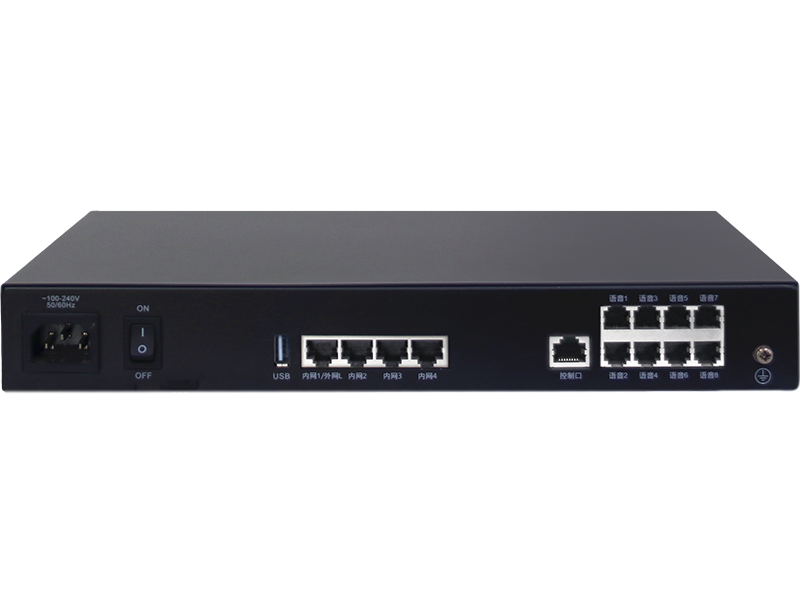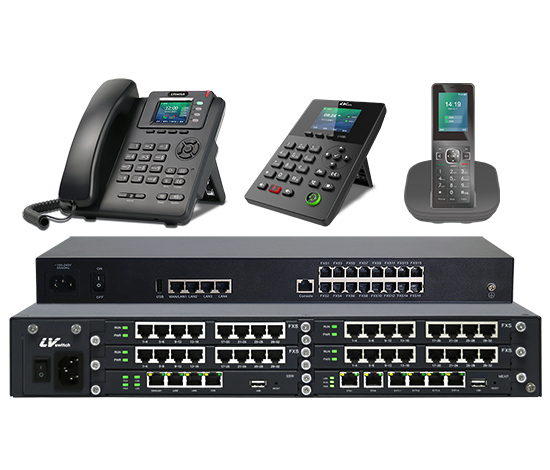Because IP phones are used to ensure their security, IP phones are generally private IP addresses, and the network and broadcast addresses must be reserved and used when assigning. At the same time, the server terminal and each network terminal are divided, and the address is selected. Pay attention to the type of address, and the number of connections of each network end computer should not exceed the specified range, otherwise it will affect the transmission efficiency. The following is a brief introduction.
First, the principle of IP phone address allocation:
1. The IP used in the local area network must be all private IP addresses (to prevent inaccessible servers with the same IP in the external network).
2. The network address and broadcast address cannot be kept unused.
3. The gateway should be set to the first and last of a network segment (ie 192.XXX.XXX.1 or 192.XXX.XXX.254).
4. Different departments can be divided by subnet mask, and the subnet can be divided into different network segments or divided by vlan.
5. The server or some terminal devices can be located in the same independent network segment, or they can be located in the earlier or later positions of the network segments that need to be accessed or used (according to the actual situation).
6. Configure DHCP to assign dynamic IP to all users in the network (to avoid IP conflicts).

Second, the matters needing attention in IP phone address selection:
1. Assign a Class C IP address segment to each network segment. It is recommended to use IP addresses in the 192.168.2.0~192.168.254.0 segment. Because some network devices (such as broadband routers or wireless routers) or applications (such as ICS) have the function of automatically assigning IP addresses. And the default IP addresses are often in the 192.168.0.0 and 192.168.1.0 segments.
2. The subnet mask of class C address can be used, if necessary, the variable length subnet mask can be used. Under normal circumstances, do not use an excessively large subnet mask. The number of computers in each network segment should not exceed 250 computers. The more computers on the same network segment, the larger the number of broadcast packets, the more effective bandwidth is lost, and the lower the network transmission efficiency.
3. Even if you choose the IP address of 10.0.0.1 ~ 10.255.255.254 or 172.16.0.1 ~ 172.32.255.254, it is recommended to use 255.255.255.0 as the subnet mask. In order to obtain more IP network segments, and make the number of computers accommodated in each subnet are less. Of course, if necessary, a variable-length subnet mask can be used to appropriately increase the number of computers that can be accommodated.
4. Assign an independent IP address segment to the management VLAN of the network equipment to avoid address conflicts with the management IP of the network equipment, thereby affecting the realization of remote management. For the same reason, all servers must be divided into an independent network segment.
First, the principle of IP phone address allocation:
1. The IP used in the local area network must be all private IP addresses (to prevent inaccessible servers with the same IP in the external network).
2. The network address and broadcast address cannot be kept unused.
3. The gateway should be set to the first and last of a network segment (ie 192.XXX.XXX.1 or 192.XXX.XXX.254).
4. Different departments can be divided by subnet mask, and the subnet can be divided into different network segments or divided by vlan.
5. The server or some terminal devices can be located in the same independent network segment, or they can be located in the earlier or later positions of the network segments that need to be accessed or used (according to the actual situation).
6. Configure DHCP to assign dynamic IP to all users in the network (to avoid IP conflicts).

Second, the matters needing attention in IP phone address selection:
1. Assign a Class C IP address segment to each network segment. It is recommended to use IP addresses in the 192.168.2.0~192.168.254.0 segment. Because some network devices (such as broadband routers or wireless routers) or applications (such as ICS) have the function of automatically assigning IP addresses. And the default IP addresses are often in the 192.168.0.0 and 192.168.1.0 segments.
2. The subnet mask of class C address can be used, if necessary, the variable length subnet mask can be used. Under normal circumstances, do not use an excessively large subnet mask. The number of computers in each network segment should not exceed 250 computers. The more computers on the same network segment, the larger the number of broadcast packets, the more effective bandwidth is lost, and the lower the network transmission efficiency.
3. Even if you choose the IP address of 10.0.0.1 ~ 10.255.255.254 or 172.16.0.1 ~ 172.32.255.254, it is recommended to use 255.255.255.0 as the subnet mask. In order to obtain more IP network segments, and make the number of computers accommodated in each subnet are less. Of course, if necessary, a variable-length subnet mask can be used to appropriately increase the number of computers that can be accommodated.
4. Assign an independent IP address segment to the management VLAN of the network equipment to avoid address conflicts with the management IP of the network equipment, thereby affecting the realization of remote management. For the same reason, all servers must be divided into an independent network segment.
